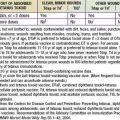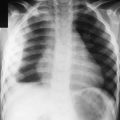Chapter 27 Disruptive Behavioral Disorders
Description
Oppositional defiant disorder is characterized by a persistent pattern of angry outbursts, arguing, vindictiveness, and disobedience, generally directed at authority figures (such as parents and teachers). To meet the diagnosis, ≥4 of these types of behavior must be more frequent and more severe than children of a given developmental stage normally exhibit (especially when tired, hungry, or under stress), must be present at least 6 mo, and must impair the youth’s function at home, at school, or with peers (Table 27-1).
Table 27-1 DSM-IV-TR DIAGNOSTIC CRITERIA FOR OPPOSITIONAL DEFIANT DISORDER
From American Psychiatric Association: Diagnostic and statistical manual of mental disorders, fourth edition, text revision, Washington, DC, 2000, American Psychiatric Association.
Conduct disorder is characterized by a persistent pattern of serious rule-violating behavior, including behaviors that harm (or have the potential to harm) others. The patient with conduct disorder typically shows little concern for the rights or needs of others. The symptoms of conduct disorder are divided into 4 major categories: physical aggression to people and animals including bullying, fighting, weapon carrying, cruelty to animals, and sexual aggression; destruction of property, including firesetting and breaking and entering; deceitfulness and theft; and serious rule violations, including running away from home, staying out late at night without permission, and truancy. To meet the diagnosis, ≥3 of these symptoms must be present at least 1 year (1 or more in the past 6 mo) and must impair the youth’s function at home, at school, or with peers (Table 27-2).
Table 27-2 DSM-IV-TR DIAGNOSTIC CRITERIA FOR CONDUCT DISORDER
Specify Type Based on Age at Onset:
Specify Severity:
From American Psychiatric Association: Diagnostic and statistical manual of mental disorders, fourth edition, text revision, Washington, DC, 2000, American Psychiatric Association.
Differential Diagnosis
Although oppositional defiant disorder and conduct disorder share a number of characteristics, oppositional defiant disorder can be distinguished from conduct disorder by the absence of physical aggression and other severe forms of antisocial behavior. When the youth’s pattern of behavior meets the criteria for both oppositional defiant disorder and conduct disorder, the diagnosis of conduct disorder takes precedence. Other diagnoses to consider in the differential include attention-deficit/hyperactivity disorder (ADHD) (Chapter 30), bipolar disorder (Chapter 24), developmental disorders (Chapter 28), and communication disorders (Chapter 32), in which anger and disruptive behavior can be associated symptoms.
Comorbidity
ADHD, anxiety (Chapter 23), depression and bipolar disorders, post-traumatic stress disorder (Chapter 23), substance abuse (Chapter 108), and impulse control, learning, and communication disorders commonly co-occur with oppositional defiant disorder and conduct disorder. Treating comorbidities when they occur enhances the treatment of the disruptive behavior disorders.
Clinical Course
Oppositional behavior can occur in all children and adolescents from time to time, particularly during the toddler and early teenage periods when autonomy and independence are developmental tasks (see 27.1). Oppositional behavior becomes a concern when it is intense, persistent, and pervasive and when it affects the child’s social, family, and academic life.
Early Identification
All children should be screened for out-of-control behavior. A typical screening question would be “Does [name] have trouble controlling [his/her] anger or behavior?” If the question is answered affirmatively, a symptom-rating scale designed for parent report can be administered to standardize the assessment (Chapter 18). If the screening indicates clinically significant behavior symptoms, the pediatric practitioner should refer to a qualified mental health clinician for a comprehensive diagnostic evaluation to determine the presence of disruptive behavioral and other comorbid psychiatric and medical disorders. The evaluation must include assessment of the potential for harm to self or others.
American Academy of Child and Adolescent Psychiatry. Practice parameter for the assessment and treatment of children and adolescents with conduct disorder. J Am Acad Child Adolesc Psychiatry. 36(10 suppl), 1997.
American Academy of Child and Adolescent Psychiatry. Practice parameter for the assessment and treatment of children and adolescents with oppositional defiant disorder. J Am Acad Child Adolesc Psychiatry. 2007;46:126-141.
American Psychiatric Association. Diagnostic and statistical manual of mental disorders, fourth edition, text revision. Washington, DC: American Psychiatric Association; 2000.
Collett BR, Ohan JL, Myers KM. Ten-year review of rating scales. VI. Scales assessing externalizing behaviors. J Am Acad Child Adolesc Psychiatry. 2003;42:1143-1170.
Pappadopulos E, MacIntyre JCII, Crismon ML, et al. Treatment recommendations for the use of antipsychotics for aggressive youth (TRAAY), part II. J Am Acad Child Adolesc Psychiatry. 2003;42:145-161.
Schur SB, Sikich L, Findling RL, et al. Treatment recommendations for the use of antipsychotics for aggressive youth (TRAAY), part I: a review. J Am Acad Child Adolesc Psychiatry. 2003;42:132-144.
27.1 Age-Specific Behavioral Disturbances
Childhood and Adolescence
Aggression and Bullying (See Also Chapter 36.1)
Clinically, it is important to differentiate the causes and motives for childhood aggression. Intentional aggression may be primarily instrumental, to achieve an end, or primarily hostile, to inflict physical or psychologic pain. Children who are callous and not empathetic and who are often aggressive require mental health intervention. These children are at high risk for suspension from school and eventual school failure. Learning disorders are common, and aggressive children should be screened. Other forms of psychopathology may be present; in particular, aggressive children with ADHD (Chapter 30) might have oppositional defiant disorder and/or conduct disorder. Some aggressive, impulsive children have bipolar disorder; a family history of bipolar disorder, grandiosity, elation, and cyclic mood disturbance may be evident in the history of these children.
Children exposed to aggressive models on television, in video games, or in play show more aggressive behavior compared with children not exposed to these models (Chapter 36). Parents’ anger and aggressive or harsh punishment model behavior that children might imitate when they are physically or psychologically hurt. Parents’ abuse may be transmitted to the next generation by several modes: children imitate aggression that they have witnessed, abuse can cause brain injury (which itself predisposes the child to violence), and internalized rage often results from abuse.
American Academy of Child and Adolescent Psychiatry. Practice parameter for the assessment and treatment of children and adolescents with conduct disorder. J Am Acad Child Adolesc Psychiatry. 36(10 suppl), 1997.
American Academy of Child and Adolescent Psychiatry. Practice parameter for the assessment and treatment of children and adolescents with oppositional defiant disorder. J Am Acad Child Adolesc Psychiatry. 2007;46:126-141.
American Psychiatric Association. Diagnostic and statistical manual of mental disorders, fourth edition, text revision. Washington, DC: American Psychiatric Association; 2000.
Bloomquist ML, Schnell SV. Helping children with aggression and conduct problems. New York: Guilford Press; 2002.





